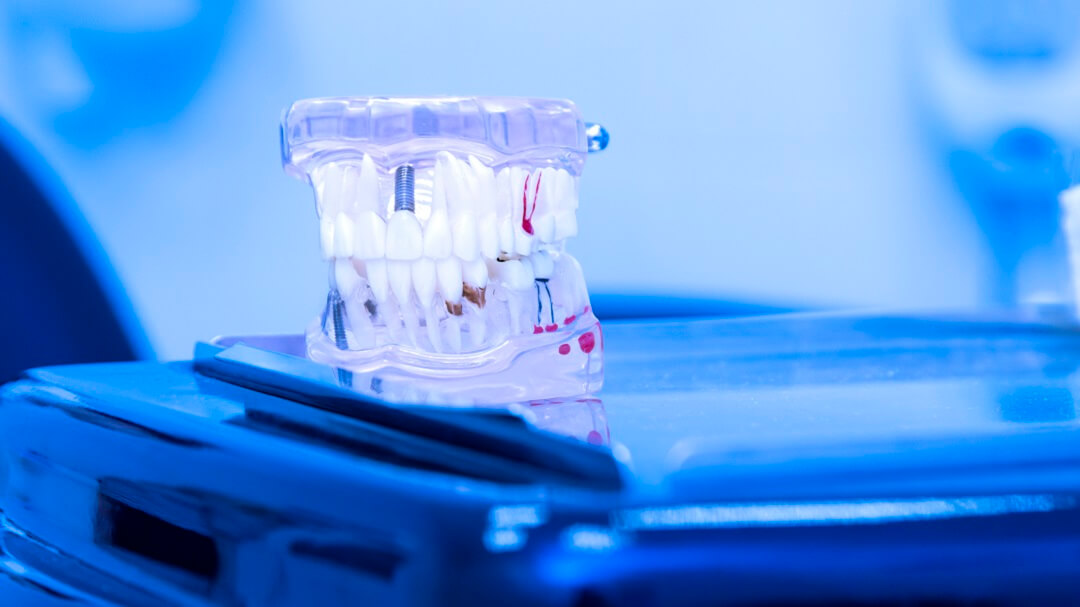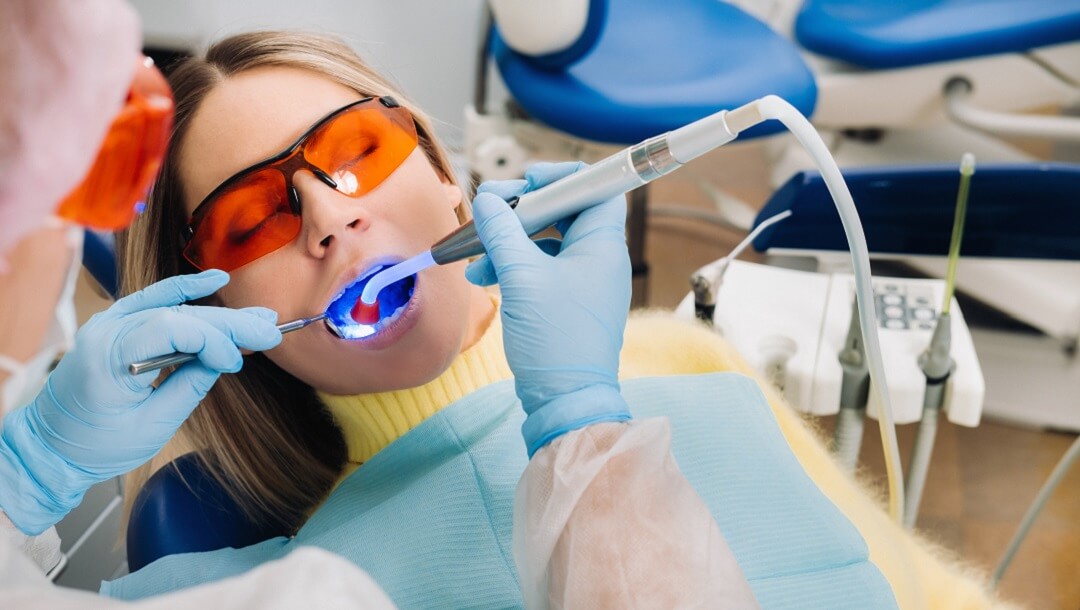Most Americans believe that a smile is an important social asset and that an unattractive smile can even hurt your chances at success in both business and relationships. While many different things, such as crooked or missing teeth, can make you unhappy with your smile, the American Academy of Cosmetic Dentistry reports that the number one thing people would change about their smile is brighter and whiter teeth. At Soundview Family Dental, we understand how important a bright white and healthy smile is to our patients and our in-office blue light teeth whitening can, in most cases, deliver the results you are hoping for.
Key Takeaways
- Blue light teeth whitening gives immediate results for whiter teeth.
- In-office professional treatments are more effective than over-the-counter products.
- LED blue light intensifies bleaching for faster results.
- Process includes evaluation, polishing, whitening, and gum protection.
- Pros: professional care, immediate results, evaluation. Cons: longer procedure time, potential tooth sensitivity.
The teeth whitening process
If you are unhappy with the color of your teeth, chances are you have already tried over-the-counter teeth whitening products with little to no effect. While these products can, over time, lighten the color of your teeth, they are not strong enough to help you achieve a real shade difference. They also don’t truly remove stains on the teeth and, even when they do, it can take weeks or months of treatment to achieve your goals. In-office professional whitening treatments use a higher concentration of whitening chemicals for a shorter amount of time, allowing you to see immediate results that last. In addition, adding LED blue light to your whitening treatment helps further brighten and whiten your smile.

What can you expect during the whitening process?
To begin a whitening treatment, the dentist first evaluates your teeth. Unfortunately, not all tooth discolorations can be treated with whitening treatments. If your discoloration comes from deep within the dentin of your tooth, you have what is known as intrinsic stains.
Unfortunately, whitening treatments will not change these discolorations and your dentist may recommend other treatment options. Also, if you have dental restorations on your front teeth, you must understand that whitening treatment will not change these restorations, so you may end up with uneven shades between teeth. Your cosmetic dentist will discuss all options before scheduling your whitening treatment. When you come in, you can expect these standard steps:
- Before starting your whitening treatment, your current tooth shade will be recorded to see how the whitening process progresses.
- The dentist then polishes your teeth, removing any plaque on the front surface. This ensures the enamel is exposed to the whitening solution.
- Lip retractors and gauze are put in place to pull your lips, cheek, and tongue away from the surface of your teeth.
- A specialized barrier is placed along your gum line to help prevent direct contact between the whitening agent and the gums, as this can cause irritation.
- The teeth are coated with the whitening solution, which contains either hydrogen peroxide or carbamide.
- An LED blue light is placed over the teeth and the solution is left in place for 30 to 60 minutes, or additional reapplications may be done.
- Once the desired shade is reached (or the maximum time limit is reached), the solution is rinsed off your teeth.
What is the blue light in teeth whitening?
Most whitening treatments use a peroxide-based whitening agent that dentists apply directly to the teeth. The use of an LED blue light in addition to these whitening agents provides a boost, delivering more intense bleaching in a faster timeframe and helping you achieve your results and get back to your day.

What does the blue light do in teeth whitening?
Once the whitening agent is placed on the surface of your teeth, the blue light activates the whitening agent and starts a chemical reaction. This chemical reaction helps to penetrate the tooth’s enamel, lift existing stains in a quicker and more efficient manner, and provide more intense bleaching. This allows the treatment to achieve your goals faster and reduce the time the whitening agent is on the surface of your teeth.
Pros and cons of blue light teeth whitening
Just like at-home whitening treatments, there are pros and cons for blue light whitening treatments. However, the big difference is a whitening treatment done at your dental office allows for professional care and immediate results that give you that beautiful smile you desire. But let’s take a closer look at some of the pros and cons.
Pros
- Whiter teeth and a brighter smile
- A treatment that takes less time but provides brighter and whiter results that last
- A team of dental professionals working to ensure the safety of your teeth and your gums
- An evaluation of potential whitening concerns before your treatment, reducing the risk of uneven whitening from intrinsic stains or dental restorations
Cons
- Longer procedure time than simple at-home whitening treatments
- You must schedule and wait for an appointment
- As with any whitening treatment, you may experience initial tooth sensitivity after treatment, but this will subside within a few days.
Is blue light teeth whitening safe?
Blue light teeth whitening uses a blue LED light that is considered safe. The light does not heat up, so there is no risk of burn injuries from light exposure. The most common side effects from blue light whitening, or any whitening treatment, come from the bleaching agent. These side effects can include tooth sensitivity after treatment and gum and tissue irritation if the whitening agent comes in contact with your gums or cheeks and lips.
You don’t have to live with yellow teeth or a smile you are unhappy with. The caring team at Soundview Family Dental is here to help answer your tooth whitening questions and help you achieve that bright white smile you have always wanted. For more information or to schedule an appointment, contact our team online or call the office at (425) 563-6360 today.


